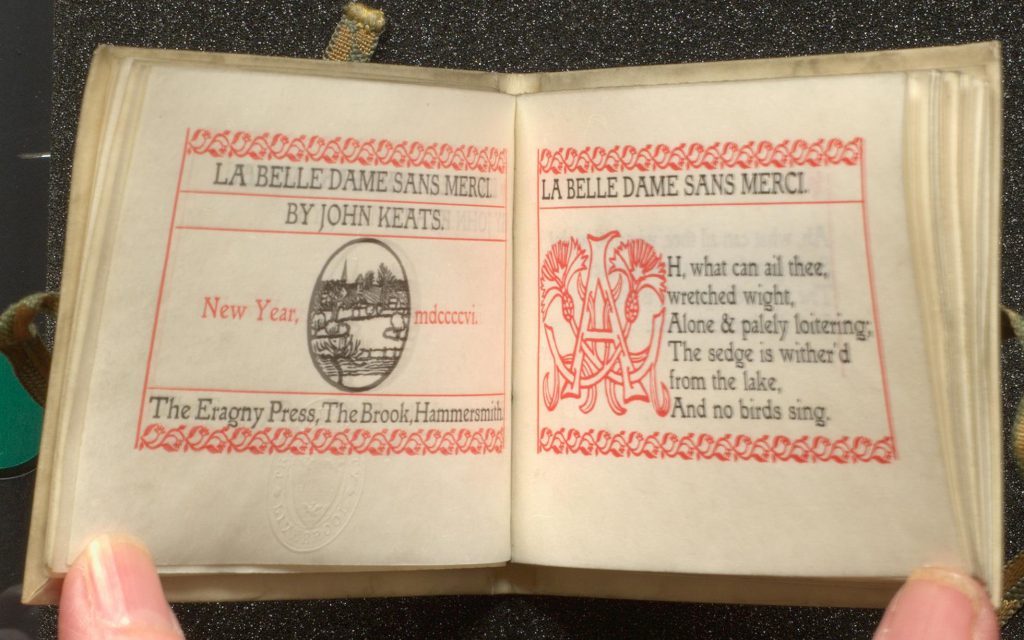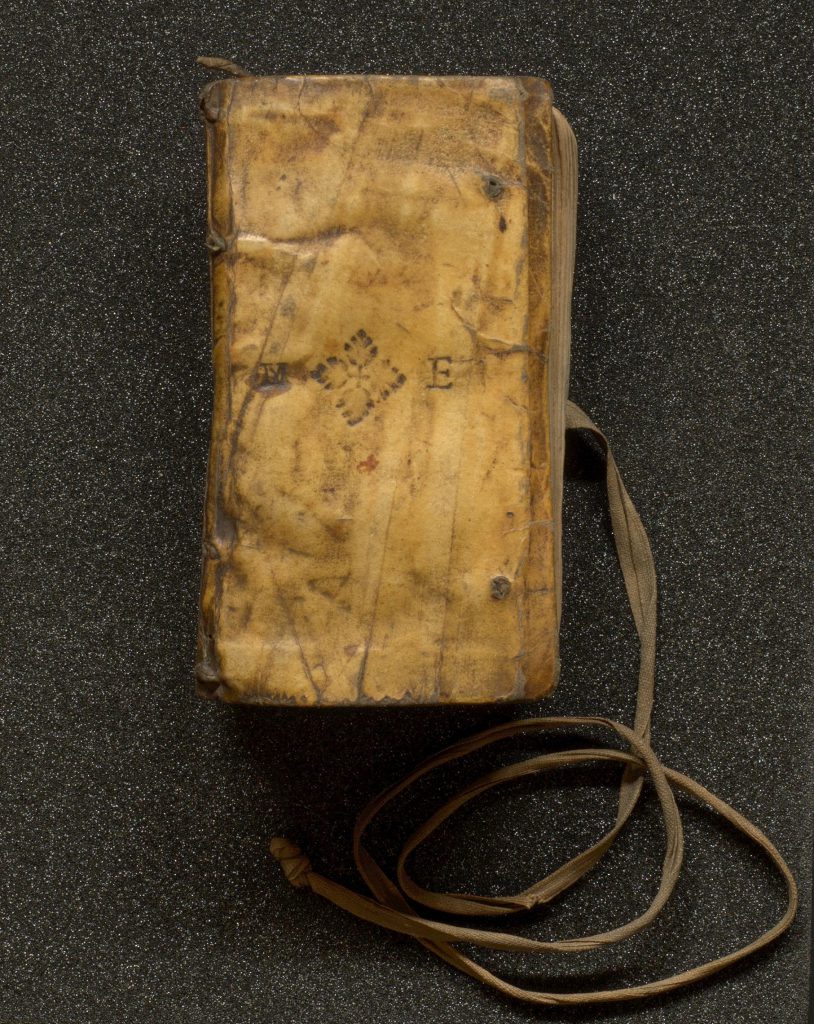Vellum is a type of high quality parchment made from calf skin – parchment being prepared animal skin (usually calf, sheep, or goat) used for writing, printing and binding manuscripts and books. The British Library’s Making Manuscripts site has a short video illustrating vellum.
Vellum and parchment are most familiar as the material used for medieval manuscripts, but books have been printed on parchment from the start of printing in the mid-15th century onwards. SPEC Inc.CSJ.F10, the first printed edition of a classical author (Cicero) was printed on vellum in 1465. SCA also holds several early 16th-century Books of Hours printed on vellum and decorated in just the same way as their manuscript companions. Fragments of parchment repurposed from manuscripts also appear in the collection as bindings, spine labels, endleaves, and page dividers.

Books printed on vellum would be the exception, sometimes specially commissioned, and more highly valued than the larger run of paper copies. A few copies printed on vellum are a common feature of limited editions and particularly of the output of private presses, including the Kelmscott Press.
A prime example of a prized book printed on vellum is the 1888 Roxburghe Club edition (SPEC H91.36) which was, appropriately, the first printing of a 15th-century manuscript.
The fine collection of private press books bequeathed by William Noble includes (SPEC Noble A.22.18) one of the 10 copies printed on vellum (out of an edition of 210 copies in all) of the Eragny Press edition of Keats La belle dame sans merci (1896).

Noble’s bequest also contains many copies printed on ‘Japon (Japanese) vellum’ – not in fact parchment of any kind, but a particularly durable paper prepared to resemble vellum.
‘Limp vellum’ or limp parchment is a term used to describe bindings common in the 16th and 17th centuries, which might be simple undecorated wrappers or ornately decorated, for example the 1595 works of Tacitus at SPEC Y59.T4.2. Later books are also commonly half- or quarter-bound in parchment.
